We’ve now completed a third rotation of the Player’s Handbook, meaning that almost every class has had every subclass from that book examined in the Class 101 series! Two classes with lots of subclasses—the cleric and wizard—will need a little extra time to cover. Starting this week, however, we’re moving away from the Player’s Handbook and taking a look at the brand-new subclasses that you’ll find in Tasha’s Cauldron of Everything!
Our next new subclass from Tasha’s is a druid who looks not to the land, not to the moon, not even to the tiniest of spores blossoming on the ground, but to the stars. These druids use the eternal patterns of the heavens to create Star Maps, take on a shimmering, starry form, and safeguard knowledge for future ages.
Check out the other guides in the Class 101 series, like the broad overview of the druid class in Druid 101: A Beginner’s Guide to Channeling Nature’s Might, Druid 101: Circle of the Land, Druid 101: Circle of the Moon, Druid 101: Circle of Spores, and Druid 101: Wildshape Guide. If you’re interested in playing other classes, check out the entire Class 101 series.
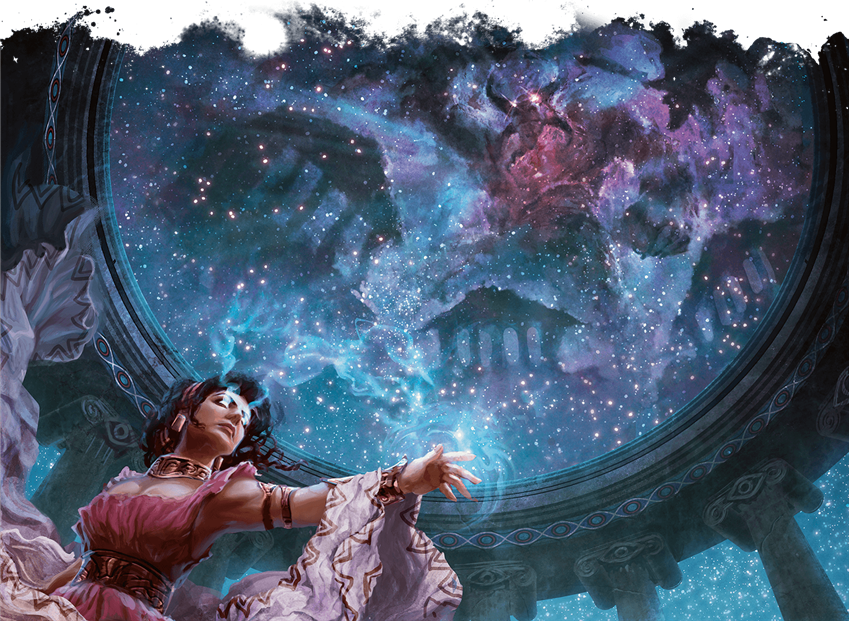
Story of the Circle of Stars
“The Great Bear sits high above the City of Towers,” a young druid muttered, her eyes affixed upon the night sky.
“Indeed,” her mentor said. He was an old druid, and hardly needed to look at the stars anymore. His eyes had grown weak over seven decades of doing so, at any rate. “The Great Bear charts her course across this realm thrice per century. I have seen it come twice in my time.”
“The other elders say it foretells ruin,” she said. She turned to her master, worry on her young face. “What happened the last two times you saw it.”
“Ruin,” the old druid said distantly, nodding as he thought back to the nights of fire and screams that had unfolded in generations past. “The Great Bear sleeps for many years, and then when it awakens, it can be most bellicose. The Fates often dictate war when she awakens.”
He glanced at his apprentice and scowled in thought. “And yet, ruin is not all the Great Bear brings. Just because war has followed in her wake in my lifetime, doesn’t mean that is all the Fates have in store for that majestic star sign. In ages past, the elves said that the Great Bear was a sign of salvation. They called it the Ladle of the Waters of Life.” He paused and chuckled. “The name sounds much more beautiful in the original elven: Laslyl’essyth.”
The young druid smiled and walked over to her mentor. She offered a hand to help him stand, and he took her hand in his, and used his other hand to grip his walking stick and together they heaved his slender frame to his feet. “How can we be certain that one such omen of the stars will come to pass, master cartographer?” she asked.
The druid shook his head. “Nothing is certain, my young stargazer. Not upon the earth, and not among the cosmos. Even the stars, when we least expect them to, may sputter out. But we cannot try to outsmart Fate. We must simply chart the stars and make our plans, and if Fate wills us to be wrong, then…” the old druid tossed his staff to his apprentice and smiled impishly. “Then we must be prepared to chart our own destiny.”
Circle of Stars Features
The Circle of Stars draws upon eternal pathways of the stars to grant them the power to cast powerful spells, create charts of the stars, and even take on aspects of the constellations themselves. The druid gains access to four subclass features at 2nd, 6th, 10th, and 14th level. You can read all of the Circle of Stars features in Tasha’s Cauldron of Everything. In summary, your subclass features allow you to:
- Create a Star Map that counts as your spellcasting focus and grants you the ability to cast guiding bolt and guidance.
- Use your Wild Shape to take on the form of a constellation, granting you one of several unique powers.
- Consult your Star Map for omens of the future, granting you the ability to use a new reaction to aid allies or hinder enemies.
- Improve your Starry Form, granting you resistance to physical damage.
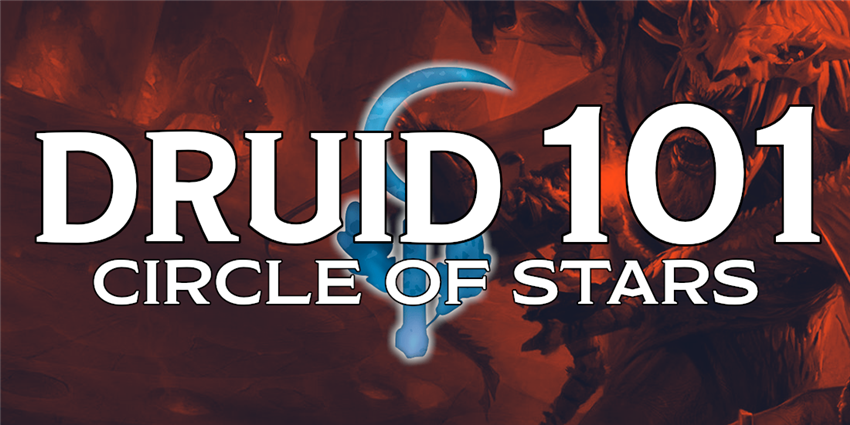
Benefits of the Circle of Stars
The Circle of Stars feels different from just about all other druid subclasses we’ve covered in this series, both in terms of its lore and in terms of its mechanics. Story-wise, these druids aren’t guardians of the natural order so much as they are observers of the stars and wardens of the stories they tell to those who know how to listen. They build great structures to record the star-stories and create Star Maps that give them connects to the cosmos even when the sun burns bright in the sky. A druid of the Circle of Stars who meets one of the Circle of the Land may take some time to understand the other’s ways.
As adventurers, druids of this circle start strong out of the gate with powerful damage-dealing capabilities. When you’re a 2nd-level druid with only three 1st-level spell slots, being able to cast guiding bolt an additional two times per long rest without spending spell slots is a huge deal. You have the ability to pump out serious damage at low levels with this spell, and even at higher levels, guiding bolt is a great way to add offensive oomph to your generally support-focused druid spell list.
Beyond this, your Starry Form feature (notably also gained at 2nd level!) grants you combat flexibility that can make you a more proficient healer (Chalice), damage-healer (Archer), or party buffer/debuffer by making it easier to maintain concentration spells (Dragon). The Dragon constellation can also help in exploration and investigation situations by granting you a Reliable Talent-like trait for your Intelligence and Wisdom checks. It uses charges of your Wild Shape feature, which otherwise is best used as a roleplaying, exploratory, or stealth tool, since you can’t transform into powerful animals. This feature is upgraded twice at higher levels, making it a highly flexible cornerstone of your class.
Drawbacks of the Circle of Stars
Despite its sublime mix of powerful, straightforward, and flexible features, the Circle of Stars isn’t without its weak points. Most notably is that its cornerstone Starry Form feature, a combat-oriented Wild Shape variant that compares most directly to the Circle of the Moon’s Combat Wild Shape, isn’t nearly as good at keeping you alive as Combat Wild Shape. For years, Circle of the Moon druids were called wildly overpowered at low levels because their Combat Wild Shape allowed them to double, even triple their hit points twice per short rest by gaining the massive hit point pool of their animal forms in addition to granting them powerful new melee attacks.
The Circle of Stars’ alternate Wild Shape feature doesn’t grant them the benefit of additional durability. Ultimately, this feature isn’t worse, it’s just different. Its strengths lie elsewhere, forcing you to play more cautiously than a reckless druid who can shapeshift into a giant bear at a moment’s notice. Likewise, the Star Map’s free uses of guiding bolt start off as an absolutely massive boost to your damage output when you choose this subclass at 2nd level, but similarly to the Circle of the Moon’s overwhelming defensive power, this huge spike in offensive power tapers off to a respectable but not game-breaking power level as you gain levels.
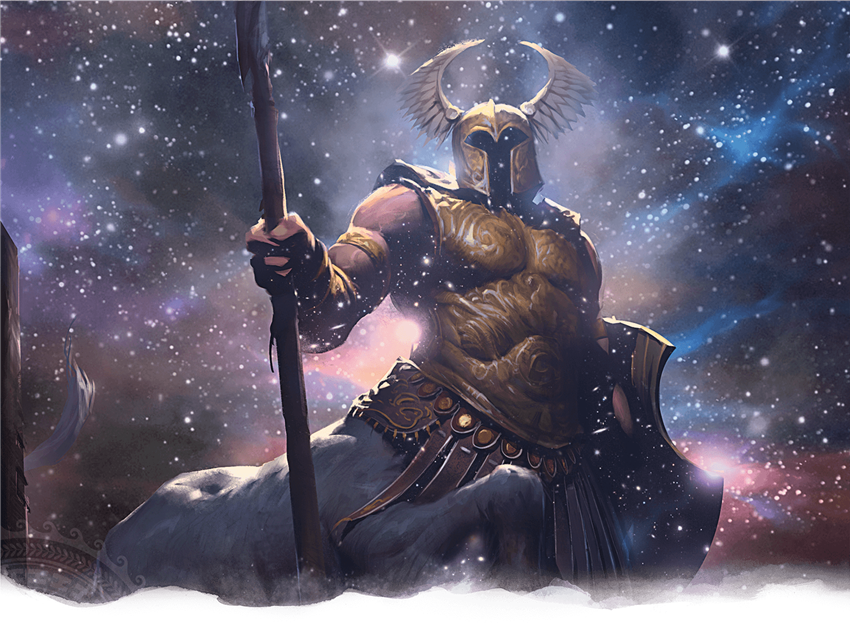
Suggested Build
As a druid, you choose your subclass at 2nd level. If you’re playing a Circle of Stars druid, you’re likely going to be fighting in the back rank of your party, wielding spells like guiding bolt and produce flame from afar while keeping an eye on the next party member you can buff or heal with your other spells. Because of this, you should play a race that improves your Wisdom score (to improve the power of your spells and class features) and either your Dexterity or Constitution scores (to improve your Armor Class or hit points). However, thanks to the new “Customizing Your Origin” section in Tasha’s Cauldron of Everything, you don’t have to let your character’s race dictate their ability scores; you can reassign your racial ability score bonuses to any score you see fit.
If you’re playing without these new rules, there are plenty of races that grant bonuses to Wisdom and Dexterity or Constitution. Wood elves and hill dwarves are solid choices, as are members of the ever-reliable human race.
Selecting EQUIPMENT when building a 1st-level druid will make your life easier, as most druids don’t have to worry too much about what equipment they carry. Fortunately, your spell selection is more important to your continued survival than your equipment selection, so just choose whatever tools you think would be useful.
Optional: Environment
If your gaming group owns a copy of Xanathar’s Guide to Everything, what kind of biome your druid grew up in could play a role in what Wild Shape forms you know from the beginning of the game. If you don’t own this book, you and your DM can simply discuss what Wild Shape options you have access to starting at 2nd level. Your druid’s environment is described in chapter 1 of Xanathar’s Guide to Everything, and you can choose from any of the options listed. As a stargazer, think about where your Circle’s monoliths reside; perhaps somewhere high on a mountaintop or on a plain where the sky stretches uninterrupted from horizon to horizon.
Spells
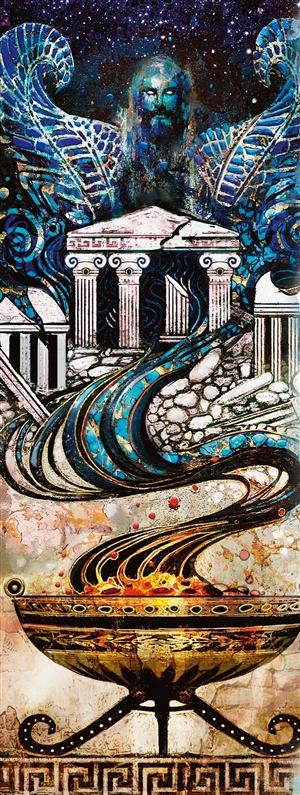 You don’t choose your subclass until 2nd level, but you can still carve out your role in the party through your spell selection before you officially join the Circle of Stars. Like a cleric, you have your entire class spell list available to you whenever you prepare spells at the start of the day. Nevertheless, when playing a druid, it can help to have a typical spell list that your druid always has prepared—unless you specifically choose otherwise. This can save you the trouble of having to re-select all your spells at the start of each day. Your Star Map feature also grants you a free, powerful damage-dealing and buff spell in guiding bolt, so you may want to gear your spell selection towards spells that will help you in social or exploration scenarios.
You don’t choose your subclass until 2nd level, but you can still carve out your role in the party through your spell selection before you officially join the Circle of Stars. Like a cleric, you have your entire class spell list available to you whenever you prepare spells at the start of the day. Nevertheless, when playing a druid, it can help to have a typical spell list that your druid always has prepared—unless you specifically choose otherwise. This can save you the trouble of having to re-select all your spells at the start of each day. Your Star Map feature also grants you a free, powerful damage-dealing and buff spell in guiding bolt, so you may want to gear your spell selection towards spells that will help you in social or exploration scenarios.
As a 1st-level druid, you know two cantrips and can prepare a number of 1st-level spells equal to 1 + your Wisdom modifier. Odds are, your Wisdom modifier will be either +2 or +3 right now, so you’ll be able to choose either three or four 1st-level spells whenever you complete a long rest. Produce flame is a good choice of cantrip, since it can serve as both ranged offense and utility. Beyond this, your cantrips are simply a matter of preference, and almost any will serve you well. Druidcraft is another good first choice, since it lets you perform all manner of minor, “druid-y” tricks.
You can prepare any 1st-level spells from the druid spell list, but you can use this list of suggested spells to prepare an all-purpose spell loadout that will serve you in most circumstances. As you go on adventures and learn what dangers your character tends to face, you can personalize your spell loadout. Try to choose one spell labeled SUPPORT and two labeled UTILITY. If you have a high Wisdom score and can prepare additional spells, choose others of your choice. Note that this list only includes some spells from the Player's Handbook and Tasha’s Cauldron of Everything, so if you want to choose more unusual spells, or have other sources like Xanathar's Guide to Everything, you'll have to do a little self-directed research. This list is just here to get you started if this is your first time playing a Circle of Stars druid.
Be warned that many druid spells require concentration, and you can only concentrate on one spell at once. Try to limit the number of concentration spells you prepare to no more than 1/3 of your spell loadout on any given adventuring day. To aid in this, all concentration spells on this list are listed as such.
- Animal friendship (DEFENSE/UTILITY)
- Charm person (SOCIAL)
- Detect magic (UTILITY)
- Entangle (DEFENSE; CONCENTRATION)
- Faerie fire (SUPPORT; CONCENTRATION)
- Fog cloud (DEFENSE; CONCENTRATION)
- Healing word (SUPPORT)
- Speak with animals (UTILITY)
- Thunderwave (COMBAT)
Feats
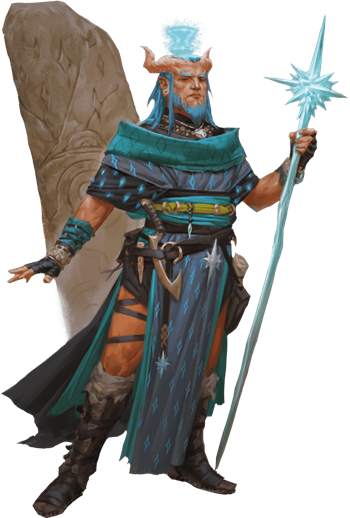 Once you’ve improved your Wisdom score to 18 or 20, you can increase your power with a few useful feats. The following feats are good picks for Circle of Stars druids, and will improve your reliability in your own desired area of expertise:
Once you’ve improved your Wisdom score to 18 or 20, you can increase your power with a few useful feats. The following feats are good picks for Circle of Stars druids, and will improve your reliability in your own desired area of expertise:
Healer. You may prefer to spend your spell slots on destructive magic, rather than healing spells. In that case, this feat will help you conserve low-level spell slots by healing with a healer’s kit instead of cure wounds.
Observant. This feat is essentially half a feat, since its effects are minor, and you also gain a +1 bonus to Wisdom when you choose it. Since Wisdom is your key ability score, this +1 can help. Perception is also a crucial skill for just about anyone.
Shadow Touched. This new feat from Tasha’s Cauldron of Everything is thematically potent for a person well-familiar with the paths of light and dark that streak across the cosmos. What power could have touched your soul from within the impenetrable light of the planes?
Telepathic. Another new feat from Tasha’s Cauldron of Everything, this gives you the ability to speak telepathically and even detect another creature’s thoughts. If you want to be a strange old stargazing hermit, adding telepathy to the mix is a perfect bit of weird magic for you.
If you want more advice for building a druid, check out Druid 101. Have you ever played a Circle of Stars druid? What advice would you give to players that want to play this subclass? Join us next week as we dive deep into the contents of Tasha's Cauldron of Everything with Fighter 101: Psi Knight!
Create A Brand-New Adventurer Acquire New Powers and Adventures Browse All Your D&D Content
 James Haeck is the lead writer for D&D Beyond, the co-author of Waterdeep: Dragon Heist, Baldur's Gate: Descent into Avernus, and the Critical Role Explorer's Guide to Wildemount, a member of the Guild Adepts, and a freelance writer for Wizards of the Coast, the D&D Adventurers League, and other RPG companies. He lives in Seattle, Washington with his fiancée Hannah and their animal companions Mei and Marzipan. You can find him wasting time on Twitter at @jamesjhaeck.
James Haeck is the lead writer for D&D Beyond, the co-author of Waterdeep: Dragon Heist, Baldur's Gate: Descent into Avernus, and the Critical Role Explorer's Guide to Wildemount, a member of the Guild Adepts, and a freelance writer for Wizards of the Coast, the D&D Adventurers League, and other RPG companies. He lives in Seattle, Washington with his fiancée Hannah and their animal companions Mei and Marzipan. You can find him wasting time on Twitter at @jamesjhaeck.








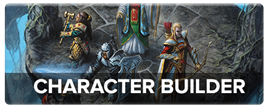
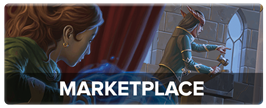
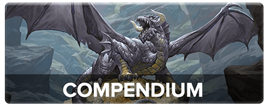
-
View User Profile
-
Send Message
Posted Jan 6, 2021This subclass is cool, I might play it sometime. As always, amazing article James!
-
View User Profile
-
Send Message
Posted Jan 6, 2021great, one of my players was thinking about playing these this will be really helpful!
-
View User Profile
-
Send Message
Posted Jan 6, 2021It occurs to me that both mechanically and thematically, this subclass is a good fit for Loxodons, if they're allowed as a PC race. Having an AC of 12+Con eliminates the need for armor at low levels, and the whole reading the stars and meditating really seems in keeping with their portrayal.
-
View User Profile
-
Send Message
Posted Jan 6, 2021Great article!
I'm not much of a fan of multi-classing myself, but I have to admit, it would be interesting to multi-class a Circle of Stars druid with a Divination wizard, to increase their powers related to the stars telling about the future and fate. And secondly, I think Moon Elf would be a great race to play for this, because (A) elves make excellent druids and (B) it would give you great options for a backtstory related to your race's culture, considering the Moon Elves' preexisting affinity with the stars.
-
View User Profile
-
Send Message
Posted Jan 6, 2021Probably going to take a page from the Theros playbook; and make this Druid someone who was ordained by cosmic forces to protect the world.
-
View User Profile
-
Send Message
Posted Jan 6, 2021And the Loxodon's Wisdom bonus can't hurt!
-
View User Profile
-
Send Message
Posted Jan 6, 2021Thank you! These druids are really cool and I like how thematic you can get with them.
-
View User Profile
-
Send Message
Posted Jan 6, 2021I’m currently playing a Wood Elf Star Druid for Rime of the Frostmaiden, and I think it fits really well because the stars are always out in Icewind Dale. Anways, Guiding Bolt is the highlight of the subclass at lower levels. I never really used Guiding Bolt when I used a Cleric, mostly because I never realized that it was 4d6 damage! They make perfect offensive and support characters, but be sure to stay away from the thick of combat. They’re kinda squishy!
-
View User Profile
-
Send Message
Posted Jan 7, 2021Guiding Bolt is what all the Wizard/Warlock/Sorcerer first level offensive spells wish they were.
-
View User Profile
-
Send Message
Posted Jan 7, 2021First article of 2021!
I think that stars druids are really interesting in their abilities and versatility, and they can also be flavored in a couple of fun ways. If paired with a good DM who adds more non-mechanical benefits, abilities and potential plot points, they can be really fun.
-
View User Profile
-
Send Message
Posted Jan 7, 2021I wasn't really excited for this subclass at first, probably because the character art doesn't look like something I'd really ever want to play as (that dude looks kind of like a boring character to play. A great "old wise one" NPC, but can we get something a little more appealing?). However, reading in a bit more, some clear benefits and really cool aspects of this start to come out. I want to play a goliath stars druid. Not mechanically the greatest, but has a lot of RP value, and that's what I'm usually after. Great article James!
-
View User Profile
-
Send Message
Posted Jan 7, 2021This would be great for a Theros campaign.
-
View User Profile
-
Send Message
Posted Jan 7, 2021Yes! Especially if you take the nyxborn supernatural gift. Your gifts could represent your innate connection to the stars. You could even have your star map literally just be your own skin.
-
View User Profile
-
Send Message
Posted Jan 7, 2021Finally a druid with an excuse to use a spelljammer.
-
View User Profile
-
Send Message
Posted Jan 7, 2021Agreed, the art can be misleading. A circle of stars druid could also be viewed as a mighty warrior that draws upon the power of the stars to bring justice. the art just makes it look like a school of divination MKII
-
View User Profile
-
Send Message
Posted Jan 8, 2021Nice article Mr. Haeck! You might want to check the first phrase of the story for a typo, though...
"The Great Bear has sits high above the City of Towers,"
Considering how many articles I've read of yours, however, it's a pretty great track record that this is the first mistake I've ever noticed.
-
View User Profile
-
Send Message
Posted Jan 8, 2021Yes! I want to see a goliath in starry form aiming her bow at some titanic monster, or a Dragonborn being redundant in dragon constellation form. Though, I'm not sure what you mean by the school of divination MKII. I think you could definitely make a divination wizard look really cool.
-
View User Profile
-
Send Message
Posted Jan 9, 2021I really want to play a Star Druid with Great Old One Warlock multiclassing. You might think it would have to be a traitor or servant of two masters build, but I'm thinking that if you did this, your patron could be the benevolent entity that taught your circle all its divinationy rites!
-
View User Profile
-
Send Message
Posted Jan 10, 2021I was thinking of Multiclassing Celestial Warlock with Path of Chain and Gift of the Ever-living Ones with a Circle of the Stars Druid focusing on Chalice healing. Thematically both work with the stars and it would make an interesting character in the thick of things constantly healing itself.
-
View User Profile
-
Send Message
Posted Jan 11, 2021That's a really good idea. I hadn't thought about that.